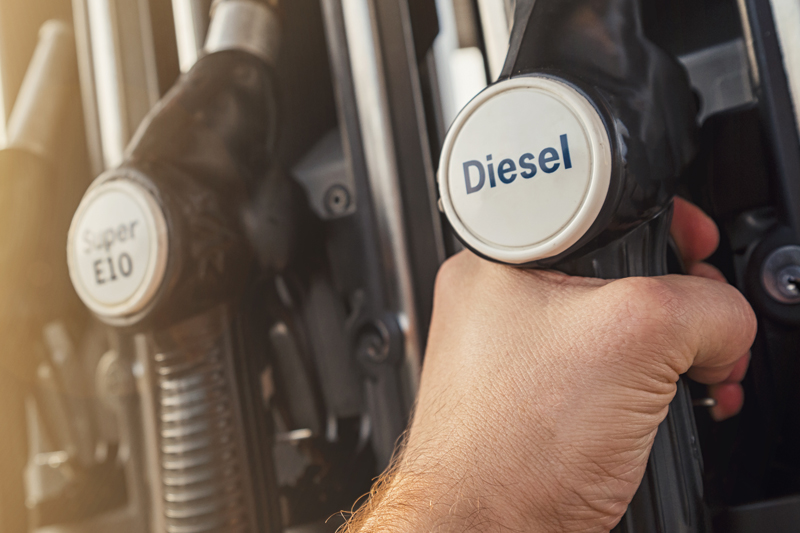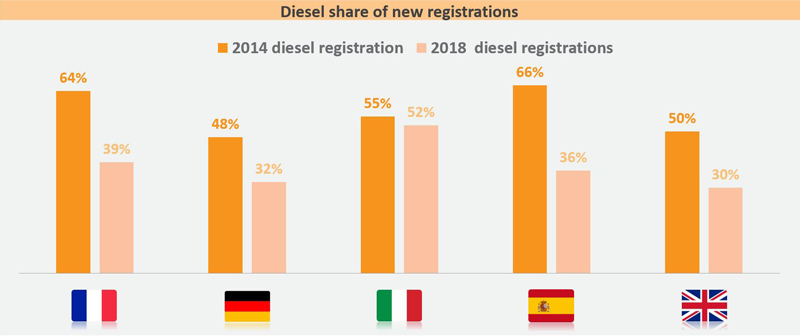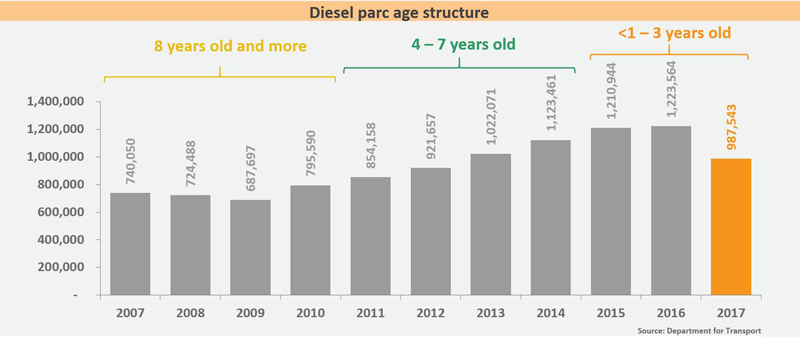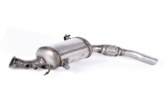
GiPA’s Quentin Le Hetet examines the recent downturn in diesel registrations, and explains why this doesn’t necessarily mean that the diesel car parc is in danger of falling by the wayside.
Diesel, and the falling registration figures of passenger cars using the fuel, has been a concern for numerous companies operating across Europe. With the fuel type demonised by many in the public sector and the general public alike, several countries have seen diesel’s share of total registrations drop by 20% or more between 2014 and 2018.
In the EU5 countries, the impact of ‘diesel gate’ has varied. Italy, for instance, has been left largely unaffected by diesel’s negative press, with diesel’s share of registrations having only dropped by 3% between 2014 and 2018. Others have not gotten off so lightly, however; in Spain, diesel’s share of registrations dropped by 30% during the same period. On average, across the EU5 nations, the effect has been pronounced; across France, Germany, Italy, Spain, and the UK, diesel’s share of registrations dropped by an average of 19% between 2014 and 2018.
Does this spell the end of the road for diesel?
It is inevitable that seeing a fuel type – which once accounted for over 50% of registrations in many countries – drop in demand so quickly and appear to lose relevance, will create worry. For those that have a significant investment in diesel, such as vehicle manufacturers and parts manufacturers that focus on diesel parts, this will especially be the case.
But, is it really the end of the road for diesel?
The answer is…probably not, at least not for those who are invested in the diesel aftermarket.

Diesel’s drop in registrations has been sudden and significant, rather than gradual, and as recently as 2016, diesel accounted for 47% of new car registrations in the UK. Now, when you consider the vehicles registered in 2015, 2016, 2017 and 2018, you can understand that these vehicles are yet to reach their aftermarket maturity; they are destined to have many years of service still ahead of them, which means there will be many more workshop entries.
Furthermore, the adoption of diesel is still relatively new to the marketplace; diesel vehicles only started to become prominent in the early 2000’s, and registrations peaked in 2015. Considering the life expectancy of a diesel car is 13.7 years (the average diesel car being 6.7 years old), and with diesel vehicles still being purchased by drivers, the diesel parc is still actually growing in size.

As visualised above, there are still millions of diesel cars between <1 and 5 years of age still with their ‘prime’ workshop years ahead of them. With nearly half of the diesel parc falling into this category, GiPA claims that it fully expects diesel’s importance to the aftermarket to increase in the coming years, as more and more of these younger bracket vehicles age and their requirement for workshop entries increases as a result.
It is not simply diesel specific parts which will benefit from this, though. Diesel car owners drive their vehicles more per year on average than their petrol driver counterparts. Considering this, opportunities for changing wear and tear parts on diesel vehicles will also increase in the coming years as the diesel parc increases.
Sales of diesel cars may be going through a downturn, but this doesn’t necessarily mean the aftermarket will also see a downturn in diesel focus too.







